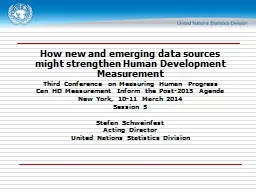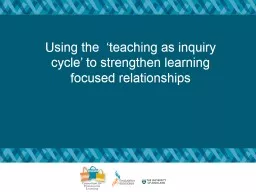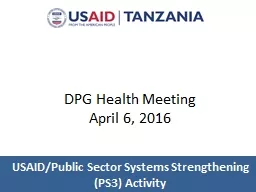PPT-How new and emerging data sources might strengthen Human De
Author : ellena-manuel | Published Date : 2017-11-30
Third Conference on Measuring Human Progress Can HD Measurement Inform the Post2015 Agenda New York 1011 March 2014 Session 5 Stefan Schweinfest Acting Director
Presentation Embed Code
Download Presentation
Download Presentation The PPT/PDF document "How new and emerging data sources might ..." is the property of its rightful owner. Permission is granted to download and print the materials on this website for personal, non-commercial use only, and to display it on your personal computer provided you do not modify the materials and that you retain all copyright notices contained in the materials. By downloading content from our website, you accept the terms of this agreement.
How new and emerging data sources might strengthen Human De: Transcript
Download Rules Of Document
"How new and emerging data sources might strengthen Human De"The content belongs to its owner. You may download and print it for personal use, without modification, and keep all copyright notices. By downloading, you agree to these terms.
Related Documents














